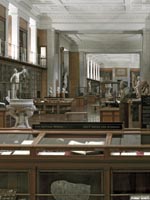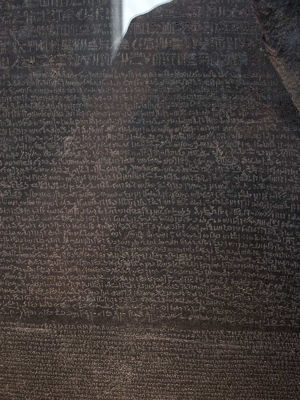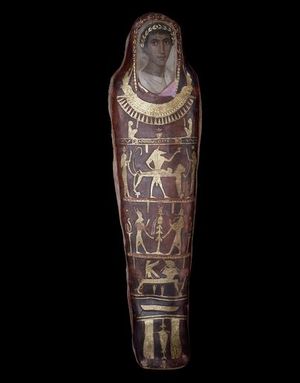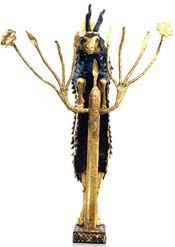British Museum
 From Conservapedia
From Conservapedia 
The British Museum is one of the world's foremost museums. Its collection consists of more than 7 million objects and is visited by more than 4.5 million people a year.
Contents
- 1 History
- 2 Antiquities
- 3 Departments
- 4 See also
- 5 External links
History[edit]
The history of the British Museum began when Sir Hans Sloane (1660-1753) left his collection of more than 71,000 objects to King George II for the nation in return for payment of £20,000 to his heirs. A group of Trustees was charged with supervising the collection. The King did not show much interest first but he was persuaded to accept it and an Act of Parliament established the British Museum in 1753.
The Cotton collection of manuscripts, which had been given to the nation in 1700, was added to the collection and the Harleian collection of manuscripts was purchased, too.
The British Museum opened to the public on 15 January 1759. Since its collection belonged to the nation, free admission has been granted from the beginning.
Antiquities[edit]

The purchase of Sir William Hamilton's collection of Greek vases and other classical objects in 1772 meant the beginning of numerous other acquisitions of antiquities, including the Rosetta Stone, a basalt tablet with inscriptions in Greek and in Egyptian hieroglyphic and demotic scripts on it, which provided the key to the decipherment of the ancient Egyptian hieroglyphic script.
The British Museum collection includes statuary and decorated architecture from throughout pharaonic history, often inscribed with hieroglyphs. Many other aspects of ancient Egyptian culture are represented: coffins and mummies of individuals, but also furniture, fine jewellery and other burial goods. [1]

The British Museum has won the 2011 Art Fund Prize for its groundbreaking project A History of the World.
Departments[edit]

Department of Africa, Oceania and the Americas. A collection representing the cultures of indigenous peoples throughout the world.
Department of Ancient Egypt and Sudan. Objects illustrating every aspect of the cultures of the Nile Valley, from around 10,000 BC, right up to the twelfth century AD.
Department of Asia. Material from the whole Asian continent: East Asia, South and Central Asia to South-East Asia.
Department of Coins and Medals. Home to one of the world's finest numismatic collections with over one million objects.
Department of Conservation and Scientific Research. Preserving and investigating the collection for present and future generations.
Department of Greek and Roman Antiquities. One of the most comprehensive collections of antiquities from the Classical world, with over 100,000 objects.
Department of Middle East. Ancient and contemporary civilizations and cultures of the Middle East from the Neolithic period until the present.
Department of Portable Antiquities and Treasure. Co-ordinates the Portable Antiquities Scheme and administers the Treasure Act.
Department of Prehistory and Europe. Objects from the earliest human tools in Africa and Asia to the art and archaeology of Europe.
Department of Prints and Drawings. Home to the national collection of more than a million Western prints and drawings.
See also[edit]
- The National Gallery
- The National Gallery of Art
- Museo Soumaya
External links[edit]
- The British Museum
- British Museum Images
- The British Museum 250 years on.
Categories: [Museums]
↧ Download as ZWI file | Last modified: 02/20/2023 08:09:30 | 38 views
☰ Source: https://www.conservapedia.com/British_Museum | License: CC BY-SA 3.0
 ZWI signed:
ZWI signed: KSF
KSF